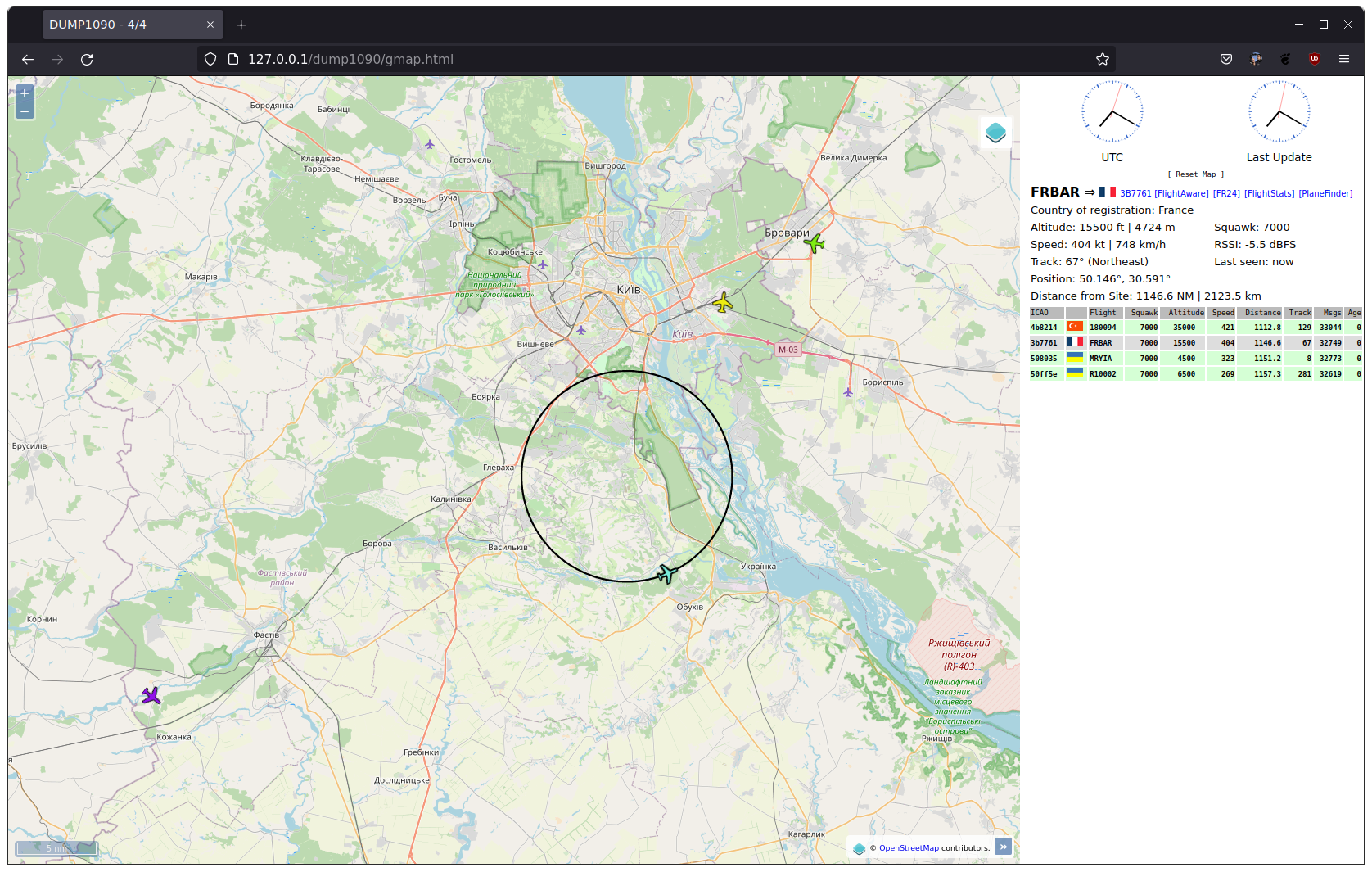This project is a highly modified fork of:
https://github.com/Matioupi/realtime-adsb-out (forked on 25 Apr 2023):
It is thus important to read the README of that project.
As such, it draws inspiration and some code from all repositories referenced in that original project: https://github.com/lyusupov/ADSB-Out https://github.com/nzkarit/ADSB-Out and https://github.com/pynstrom/adsb-out https://github.com/bistromath/gr-air-modes https://github.com/junzis/pyModeS
All referenced repositories are published under GNU General Public License v3.0. This is also the license chosen for this repository. Please let me know if you have issues or require more explicit citations about reused source code.
As per the project 'realtime-adsb-out', the workflow is divided between 3 execution threads:
- Main thread which performs all initializations and control user inputs (mainly start / stop simulation for now)
- HackRF broadcasting thread which pumps encoded messages and sends them over the air with a predefined schedule
- Trajectory simulation thread which feeds the broadcasting thread with encoded messages matching a real time simulated trajectory
The message encoding is split into Mode S "frame encoding" and "low level encoding" which handles PPM modulation and conversion to HackRF IQ sample format. The source code structure tries to reflect these two layers.
- Waypoint trajectory simulation is implemented
- Circle and Random trajectory simulations have been removed
- Increased verbosity
- HackRF configured for wireless RF transmission (Default: 1090MHz) [NOTE: It is illegal in most jurisdictions to transmit at 1090MHz!]
six3oo@computer:~/adsb-track-player$ ./adsb-track-player.py -h
Usage: ./adsb-track-player.py [options]
-h | --help Display help message
--scenario <opt> Scenario mode, argument is scenario JSON filepath
waypoints : Include waypoints.txt file in script directory
--icao <opt> Callsign in hex, default: 0x508035
--callsign <opt> Callsign (8 chars max), Default: DEADBEEF
--squawk <opt> 4-digit 4096 code squawk, Default: 7000
--trajectorytype <opt> Types of simulated trajectories:
fixed : fixed broadcast
flightsim : dynamically generated flight path
Default: fixed
--lat <opt> Latitude for the plane in decimal degrees, Default: 50.44994
--long <opt> Longitude for the plane in decimal degrees. Default: 30.5211
--altitude <opt> Altitude in decimal feet, Default: 1500.0
--speed <opt> Airspeed in decimal kph, Default: 300.0
--vspeed <opt> Vertical speed en ft/min, positive UP, Default: 0
--maxloadfactor Specify the max load factor for aircraft simulation, Default: 1.45
--trackangle <opt> Track angle in decimal degrees, Default: 0
--timesync <opt> 0/1, 0 indicates time not synchronous with UTC, Default: 0
--capability <opt> Capability, Default: 5
--typecode <opt> ADS-B message type, Default: 11
--sstatus <opt> Surveillance status, Default: 0
--nicsupplementb <opt> NIC supplement-B, Default: 0
--surface Aircraft located on ground, Default: False
--posrate <opt> Position frame broadcast period in µs, Default: 150000
--numac <opt> Number of aircraft to simulate, Default: 1
./adsb-track-player.py --callsign 'TEST' --alt 4500 --speed 600 --trajectorytype fixed --maxloadfactor 1.03
will generate a fixed trajectory, flown at 4500 ft, 600 km/h and a load factor of 1.03.
./adsb-track-player.py --numac 20 --trajectorytype flightsim
will generate 20 trajectories starting from the default ADS-B frame, slowly fuzzing out in the same general direction.
Current fuzzing settings are 5 seconds between transmits, and a randomized modifier is applied as follows with each transmit: +/- 10 km/h for speed +/- 5 feet for altitude +/- 3 degrees for track angle
./adsb-track-player.py --scenario scenario.json
The maximum number of planes that can be simulated has not been evaluated yet. It will depends on the refresh rate of each message type, etc. Tests have been performed on a laptop computer, but with not too many tracks, it should be possible to run on lighter platforms such as Raspberry Pi.
All reference documentation from the repositories mentioned in the foreword.
Ghost in the Air(Traffic): On insecurity of ADS-B protocol and practical attacks on ADS-B devices (Andrei Costin, Aurélien Francillon): publication PDF hosted at eurocom.fr
A DEFCON 20 video on Youtube that already highlighted some ADS-B weaknesses (and at this time, there was no HackRF): DEFCON 20 (2012) - RenderMan - Hacker + Airplanes = No Good Can Come Of This
